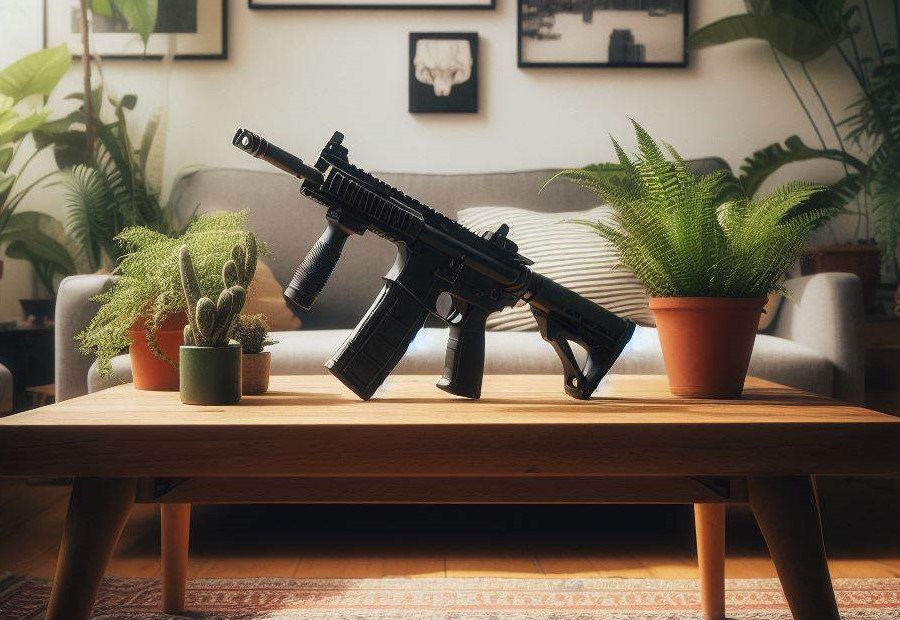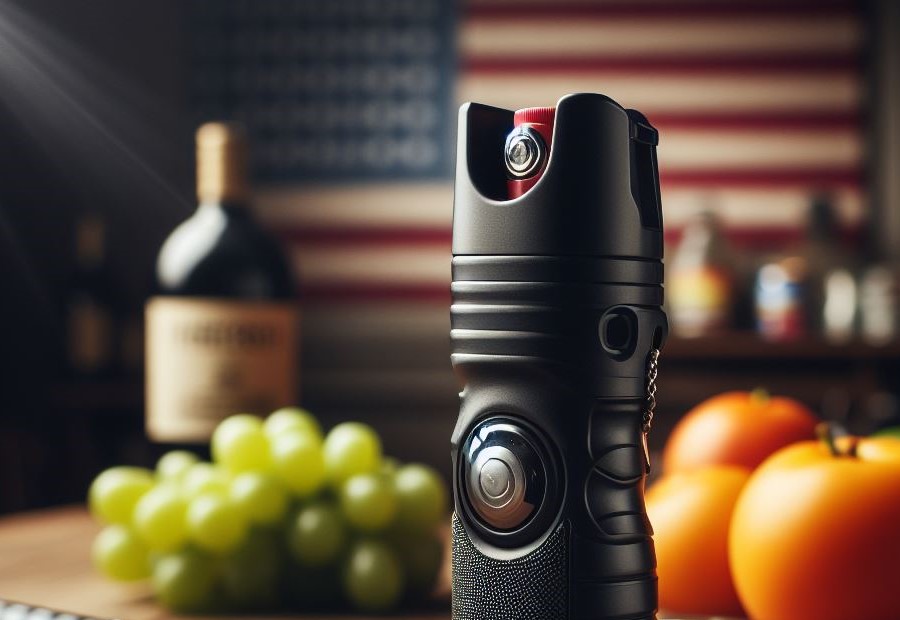Using an airsoft gun for self-defense is a topic that generates curiosity and numerous questions.
Understanding the potential of airsoft guns as a self-defense tool requires an exploration of their features, legal considerations, advantages, limitations, and available alternatives.
They are designed to resemble real firearms but are non-lethal weapons. Understanding how airsoft guns work and the different types available is essential in determining their suitability for self-defense purposes.
Considering the legality of using airsoft guns for self-defense is crucial. Laws and regulations concerning the possession and use of airsoft guns vary from country to country and even within different regions.
Understanding the legal considerations surrounding airsoft guns for self-defense is vital for responsible ownership and usage. Determining the effectiveness of airsoft guns for self-defense requires careful evaluation.
While they provide a less lethal option compared to actual firearms, several factors need to be considered, including accuracy, range, stopping power, and the need for close-range engagement.
Exploring the advantages of using airsoft guns for self-defense reveals their availability, cost-effectiveness, and training opportunities.
These benefits make them accessible to a wide range of individuals and provide opportunities for skill development and familiarization with self-defense tactics.
What is an Airsoft Gun?

An airsoft gun is a replica firearm that fires plastic pellets using compressed air or gas. These guns are commonly used for recreational purposes, such as competitive shooting games or military simulations.
Airsoft guns are designed to be non-lethal and are used for entertainment rather than self-defense. They come in various types, including pistols, rifles, and shotguns, and are often modeled after real firearms.
How Does an Airsoft Gun Work?
An airsoft gun works by using compressed gas or mechanical springs to propel small plastic BBs. These guns are designed to replicate real firearms, but they shoot non-lethal projectiles.
Compressed gas-powered airsoft guns, also known as gas blowback guns, use compressed gas, such as propane or green gas, to propel the BBs.
When the trigger is pulled, the gas is released, creating a burst of pressure that launches the BB forward. Gas-powered guns often have realistic blowback action, mimicking the recoil of a real firearm.
Mechanical spring-powered airsoft guns, on the other hand, rely on a tightly coiled spring to generate energy.
When the trigger is pulled, the spring is released, pushing a piston forward. This compressed air then propels the BB out of the barrel.
Spring-powered guns are simpler in design and often more affordable, but they require manual cocking of the spring for each shot.
Both types of airsoft guns require the use of a magazine or a hopper to hold the BBs. The magazine or hopper feeds the BBs into the gun’s firing mechanism, allowing for successive shots.
It’s important to note that airsoft guns are not toys and should be handled responsibly. They should only be used in designated recreational areas or controlled environments.
Types of Airsoft Guns
- Pistols: This is the most common type of airsoft gun and is designed to be held and fired with one hand. Pistols are compact and easy to maneuver, making them suitable for close-quarters combat.
- Rifles: Airsoft rifles are larger and typically resemble real-life assault rifles. They offer better accuracy and range compared to pistols and are suitable for medium to long-range engagements.
- Shotguns: Shotguns in airsoft are designed to fire multiple pellets or BBs with each shot, simulating the spread of a real shotgun. They are effective at close range but have limited range and accuracy.
- Sniper Rifles: Sniper rifles are long-range airsoft guns designed for precision shooting. They usually have a higher muzzle velocity and are equipped with scopes for improved accuracy.
- Submachine Guns: Also known as SMGs, submachine guns are compact and lightweight firearms that are used for rapid-fire in close-quarters combat. They are suitable for both indoor and outdoor skirmishes.
- Machine Guns: Airsoft machine guns are heavy weapons that are capable of firing a large volume of BBs in a short period. They are typically used to provide suppressive fire and cover for teammates.
Legal Considerations for Using Airsoft Guns for Self-Defense
When it comes to using airsoft guns for self-defense, there are several legal considerations for the airsoft gun users to keep in mind.
- Know your local laws: Before using an airsoft gun for self-defense, familiarize yourself with your local laws regarding their use. Some jurisdictions may not consider airsoft guns as legitimate self-defense weapons and may have strict regulations on their use.
- Use of force: Just like with any self-defense scenario, the use of force should be proportionate to the threat you are facing. Using excessive force with an airsoft gun can lead to legal consequences.
- Perceived threats: It’s important to understand that using an airsoft gun in a self-defense situation may not always be seen as justified. In some cases, it may be difficult for others to distinguish an airsoft gun from a real firearm, potentially leading to misunderstandings or escalation.
- Safe storage and transportation: When not in use, airsoft guns should be stored securely and transported in accordance with local laws. This helps prevent accidental use or unauthorized access to the weapon.
Ensure you stay informed and adhere to all relevant laws and regulations when considering the use of airsoft guns for self-defense.
Can Airsoft Guns be Effective for Self-Defense?

Less Lethal Option
Instead of employing conventional firearms that have the potential to cause severe harm or fatalities, airsoft guns discharge plastic BBs at lower velocities, thereby minimizing the risk of injury.
These guns are frequently utilized by law enforcement and military personnel during training exercises to replicate real-life scenarios.
One of the advantages of using airsoft guns for self-defense is that they offer a means of protection without the same level of lethality as firearms.
They can serve as a deterrent for potential threats and provide a defensive measure in situations where the use of a firearm may not be warranted or appropriate.
Moreover, airsoft guns are more easily obtainable and cost-effective compared to genuine firearms, making them a practical option for personal protection.
Nevertheless, it is crucial to acknowledge the limitations and risks associated with airsoft guns for self-defense.
Due to their lower power, airsoft guns may lack the necessary stopping power to effectively incapacitate an assailant. Accuracy and range can also be compromised, necessitating close proximity to the target for maximum effectiveness.
Training Opportunities
When it comes to using airsoft guns for self-defense, there are numerous training opportunities available to help individuals become proficient with these weapons.
- Range Practice: Engaging in regular range practice is crucial for improving accuracy and becoming familiar with the handling and operation of an airsoft gun.
- Scenario-based Training: Participating in exercises that simulate real-life self-defense situations allows individuals to practice making quick decisions under pressure.
- Tactical Training: Learning tactical maneuvers and strategies from experienced instructors can greatly enhance one’s ability to effectively use an airsoft gun in self-defense scenarios.
- Force-on-Force Training: Engaging in force-on-force training, where opponents are armed with airsoft guns, provides realistic training experiences and helps improve reactions and decision-making skills.
- Competitive Shooting: Participating in airsoft shooting competitions can enhance shooting skills, accuracy, and speed under controlled conditions.
Limitations and Risks of Using Airsoft Guns for Self-Defense
Lack of Stopping Power
When considering the lack of stopping power of airsoft guns for self-defense, several factors should be taken into account:
- Bullet Velocity: Airsoft guns typically have lower muzzle velocities compared to traditional firearms. The average velocity for an airsoft gun is around 300 feet per second, while firearms can exceed 1000 feet per second. This lower velocity reduces the impact force on a target, resulting in decreased stopping power.
- Projectile Size: Airsoft guns use lightweight plastic BBs as projectiles, which are much smaller and lighter than bullets used in firearms. The smaller size and lower mass of airsoft BBs make them less likely to cause significant damage or incapacitate an attacker.
- Lack of Penetration: Airsoft BBs are designed to be non-lethal and typically do not penetrate deeply into targets. Instead, they rely on the kinetic energy of the impact to cause discomfort or pain. This limited penetration can be a disadvantage when facing an assailant with thick clothing or body armor.
- Restricted Range: Airsoft guns have a limited effective range, generally around 100 feet or less. Beyond this range, the BBs may lose velocity and accuracy, making them less effective at stopping an attacker from a distance.
It is important to note that while airsoft guns may lack stopping power, they can still serve as a deterrent or provide an opportunity to escape from a dangerous situation.
However, they should not be relied upon as a primary means of self-defense where the situation may warrant the use of deadly force.
Legal Implications
Using airsoft guns for self-defense entails various legal implications. It is vital to comprehend these implications before considering the utilization of an airsoft gun for self-defense.
1. Possession laws: Having knowledge of the local laws concerning the possession of airsoft guns is crucial. Some jurisdictions may necessitate permits or impose specific regulations.
2. Mistaken identity: One of the primary legal concerns when employing an airsoft gun for self-defense is the potential for mistaken identity. In high-pressure situations, law enforcement or bystanders may misconstrue an airsoft gun as a real firearm, leading to potentially hazardous consequences.
3. Use of force laws: The use of force laws can vary based on the jurisdiction. It is imperative to understand the legal boundaries when it comes to using an airsoft gun for self-defense. Engaging in excessive force or wielding the airsoft gun unlawfully could result in legal repercussions.
4. Self-defense justification: In legal terms, self-defense generally requires the presence of an immediate threat and the utilization of proportionate force. It is important to comprehend the specific self-defense laws in your area and ensure that the use of an airsoft gun aligns with the legal definition of self-defense.
5. Public spaces: Using airsoft guns for self-defense in public spaces may be subjected to additional restrictions or prohibitions. It is advisable to consult the local laws and regulations to ensure compliance.
Accuracy and Range
Accuracy and range are crucial factors to consider when utilizing airsoft guns for self-defense.
| Accuracy | Range |
| Airsoft guns vary in accuracy depending on their quality and design. Higher-end airsoft guns often possess enhanced accuracy due to improved internal components and precision manufacturing. | The range of an airsoft gun is determined by various factors, including the power of the gun and the type of ammunition utilized. While most airsoft guns have a range of approximately 100 to 200 feet, there are specialized airsoft sniper rifles capable of reaching distances exceeding 300 feet. |
| Several factors can affect the accuracy of an airsoft gun, such as wind, ammunition type and weight, and the shooter’s skill level. Regular practice is essential to enhance accuracy and familiarize oneself with the gun’s performance. | Understanding the effective range of your airsoft gun is vital, allowing you to adjust your tactics accordingly. Engaging targets beyond your gun’s effective range may result in decreased accuracy and an inability to consistently hit the target. |
| When utilizing an airsoft gun for self-defense, accuracy is crucial in order to effectively hit and neutralize the threat. It is important to aim for the center mass and practice shooting from various distances and positions to improve accuracy skills. | Familiarizing yourself with the range of your airsoft gun enables you to make informed decisions regarding engagement distances. Being aware of your gun’s limitations can help you avoid situations where you may be outmatched or unable to engage effectively. |
Need for Close Range
A close range is crucial when utilizing airsoft guns for self-defense. Given their limited power and range, airsoft guns are most efficient when employed in close proximity to the target.
The projectiles discharged from airsoft guns may experience a reduction in velocity and accuracy over longer distances, thus making it challenging to effectively strike a target from a distance.
Hence, to enhance the likelihood of hitting the target and achieving the desired outcome, such as creating a distraction or deterring an attacker, it is imperative to be as near as possible to the threat.
It is important to note that the effectiveness of an airsoft gun for self-defense significantly diminishes when used beyond its effective range.
Consequently, it is crucial to assess the situation and determine the feasibility of close range engagement before relying on an airsoft gun for self-defense.
Alternatives to Airsoft Guns for Self-Defense

Non-Lethal Self-Defense Options
When considering non-lethal self-defense options, it is important to explore alternatives to airsoft guns. Here are some options to consider:
- Pepper spray: A widely used self-defense tool that can temporarily incapacitate an attacker by causing severe eye and throat irritation.
- Taser: A device that delivers an electric shock to disrupt muscle control and temporarily incapacitate an attacker. It provides an effective means of self-defense.
- Personal alarms: Small, portable devices that emit a loud and attention-grabbing sound when activated. They can help deter an attacker and attract attention from others.
- Stun guns: Handheld devices that deliver an electric shock upon contact with an attacker. They can immobilize an assailant temporarily.
- Self-defense classes: Learning practical self-defense techniques can empower individuals to protect themselves without relying on any specific tools or equipment.
While these non-lethal self-defense options can be effective, it’s important to note that their success depends on various factors, such as proper training, using them in appropriate situations, and following legal guidelines.
It is advisable to research and understand the laws and regulations surrounding these options in your specific area.
Frequently Asked Questions
Can you use an airsoft gun for self-defense?
Airsoft guns are not recommended for self-defense purposes. While they may resemble real guns, they lack the functionality and stopping power of real firearms.
In a life or death situation with an armed aggressor, using an airsoft gun can potentially escalate the situation and make it more dangerous.
Are airsoft guns effective as a self-defense tool?
No, airsoft guns are not designed to be used as self-defense tools. They may cause light injury, but their effectiveness in stopping an attacker is limited.
In a life-threatening situation, it is best to rely on other means of self-defense, such as obtaining a real gun or seeking defensive gun training.
Can airsoft guns deter an intruder without causing serious harm?
While airsoft guns can cause injuries, their ability to deter an intruder without causing serious harm is questionable.
Pulling out an airsoft gun in a self-defense situation is risky and dangerous. Additionally, criminals with violent intent may be more likely to harm you if they mistake the airsoft gun for a real weapon.
What are the negative sides of using an airsoft gun for self-defense?
Using an airsoft gun for self-defense has several negative sides. Airsoft guns lack the functionality and stopping power of real firearms, making them less effective in threatening situations.
Additionally, using an airsoft gun can potentially anger an attacker and escalate the situation, putting you at even greater risk.
Are there better options available for home protection than using an airsoft gun?
Yes, there are better options available for home protection than using an airsoft gun. Traditional home protection options include home security systems, which can be effective in deterring intruders.
Real guns can also be an option, but they come with legal and safety considerations. It is important to explore and consider all available options before deciding on a method of home protection.
What are the advantages and disadvantages of using an airsoft gun for self-defense?
The advantages of using an airsoft gun for self-defense include its affordability and the sense of security it can provide.
However, the disadvantages outweigh these advantages. Airsoft guns lack the power and effectiveness of real firearms, and using them in a self-defense situation can potentially escalate the danger.
It is important to consider other options and choose the most effective and safe means of self-defense.

